Why Forest Land is a Good Investment
- September 4, 2024
- 0 comment
Investing in forest land has become increasingly popular among investors seeking sustainable, long-term returns. Many people are looking for ways to invest their money that not only provide good financial returns but also help the environment. Forest land offers a unique opportunity to do just that. As awareness of climate change and environmental issues grows, more investors are recognizing the importance of sustainable practices.

By investing in forest land, they can contribute to the health of our planet while also building their wealth. This type of investment offers a unique combination of financial benefits, environmental impact, and social responsibility. Forests are valuable resources that provide timber, recreational opportunities, and habitats for wildlife.
They also play a crucial role in absorbing carbon dioxide, which helps combat climate change. Investors in forest land can benefit from the natural growth of trees, which increases the land’s value over time. Additionally, investing in forests supports local communities and promotes sustainable land management practices. Here’s a detailed look at why forest land is considered a good investment.
Physical Asset with Real Value
Forest land is a physical asset, which means it is a resource that you can see and touch. Unlike stocks or bonds, which can change in value quickly and sometimes unpredictably, forest land tends to increase in value over time.
This increase is mainly due to the natural growth of trees. As trees grow, they not only become larger but also more valuable. Many investors find comfort in owning something tangible, knowing that their investment is backed by real land and resources. Moreover, the value of forest land can be enhanced through sustainable management practices.
By carefully managing the growth and harvesting of trees, landowners can ensure that their forests remain healthy and productive. This approach can lead to higher yields of timber, which can be sold for profit. As the demand for timber products continues to rise, the value of well-managed forest land is likely to appreciate even more.
Diversification and Stability
Investing in forest land can help diversify an investment portfolio. Diversification means spreading investments across different types of assets to reduce risk. Forestry investments usually do not move in the same direction as traditional asset classes like stocks and bonds.
For example, when the stock market is unstable or declining, forest investments may remain steady or even increase in value. This quality makes forestry a valuable part of a diversified portfolio. Additionally, forest land investments can provide a sense of stability.
The natural growth of trees means that, over time, the value of the land is likely to increase. This stability can be particularly appealing during economic downturns when other investments may be losing value. Investors can feel more secure knowing that their forest land is growing in value, even when the market is unpredictable.
Protection Against Inflation
Forest land investments can protect against inflation. Inflation is when the prices of goods and services rise over time, which can reduce the purchasing power of money. As the cost of living increases, the value of timber and forest products usually rises as well. This connection allows investors to keep their purchasing power over time.
Historically, forest land has shown the ability to preserve capital and provide returns that outpace inflation. As timber prices increase, the income generated from selling timber can help investors maintain their financial stability. This makes forest land a smart choice for those looking to safeguard their investments against the effects of inflation.
Tax Benefits
Investing in forestry can come with significant tax advantages. In many places, income from timber sales is not subject to income tax, which means that investors can keep more of their profits. Additionally, capital gains tax may not apply to increases in timber value, allowing investors to benefit fully from their investment. These tax benefits can significantly enhance the overall return on investment.
Furthermore, forest land can qualify for inheritance tax relief in many jurisdictions. This means that when passing the land to the next generation, families may face lower tax burdens. This aspect makes forest land an attractive option for wealth transfer strategies. By investing in forest land, families can create a lasting legacy while also enjoying financial benefits.
Environmental Benefits
Forests play an important role in fighting climate change by absorbing carbon dioxide from the atmosphere. This process helps to reduce greenhouse gases, which are a major contributor to global warming. Investing in forest land not only provides financial returns but also helps protect the environment.
This dual benefit appeals to investors who want their investments to have a positive impact on the planet. In addition, well-managed forests can support biodiversity by providing habitats for various plants and animals.
Healthy forests contribute to clean air and water, making them essential for a balanced ecosystem. By investing in forest land, individuals can support sustainable practices that benefit both the environment and local communities. This aspect of forestry investment aligns with the growing trend of socially responsible investing.
Long-Term Investment
Investing in forest land is generally a long-term commitment, often requiring a timeframe of 10 years or more. While this may not suit every investor, those who are willing to wait can benefit from the steady growth of their investment.
Forests require relatively little maintenance once established, making them a low-effort investment compared to other asset classes. The long-term nature of forestry investments means that investors can take advantage of the compounding growth of trees.
Over time, the value of the land and the timber it produces can increase significantly. This potential for growth makes forest land an attractive option for those looking to build wealth over the long haul, especially for investors who are patient and willing to wait for their investment to mature.
Support for Local Communities
Forestry investments can also help local communities by creating jobs and promoting sustainable practices. The management and harvesting of forests often involve local people, providing employment opportunities in rural areas. Jobs in forestry can include everything from planting and maintaining trees to processing timber and managing land.
This support for local economies contributes to overall community development. Moreover, investing in forest land encourages sustainable practices that benefit both the environment and society. Responsible forest management ensures that resources are used wisely, preserving the land for future generations.
By supporting local communities through forestry investments, investors can contribute to economic growth while also promoting environmental stewardship. This aspect of forestry investment aligns with broader social goals, such as promoting decent work and economic growth.
Conclusion
In summary, investing in forest land offers numerous advantages, including physical asset value, diversification, protection against inflation, tax benefits, and positive environmental impact. While it requires a long-term commitment, the potential for stable returns and the opportunity to contribute to sustainability make forestry an appealing investment choice for many.
As awareness of climate change and environmental issues grows, the appeal of forest land as an investment is likely to increase, making it a wise consideration for those looking to diversify their portfolios while supporting a sustainable future.
Frequently Asked Questions
1. What is forest land investment?
Forest land investment involves purchasing land covered with trees to generate income from timber sales and land appreciation. It often includes sustainable management practices for long-term growth and benefits.
2. Why should I consider investing in forest land?
Forest land investments provide financial returns, inflation protection, and environmental benefits. As trees grow, their value increases, and timber prices often rise, supporting sustainable practices and combating climate change.
3. How does forest land generate income?
Income from forest land primarily comes from timber sales and other products like nuts and fruits. Landowners can also lease land for recreational activities, providing additional income streams.
4. What are the risks associated with investing in forest land?
Risks include natural disasters, market fluctuations, and management challenges. Wildfires, pests, and poor management can damage trees and reduce their value, making risk awareness essential for investors.
5. How much land should I invest in?
The amount of land to invest in depends on your financial goals and budget. Starting small allows you to learn about forest management before committing to larger investments.
6. Do I need special knowledge to manage forest land?
While expertise isn’t mandatory, knowledge of forest management practices is beneficial. Many investors hire professional foresters for assistance, especially if they lack experience in sustainable land management.
7. What are the environmental benefits of investing in forest land?
Forests absorb carbon dioxide, helping combat climate change. They also support biodiversity, contribute to clean air and water, and promote soil conservation, making them vital for ecosystem health.
8. Are there tax benefits associated with forest land investment?
Yes, potential tax benefits include exemptions on timber sale income and capital gains. Some areas also offer inheritance tax relief, making forest land investments attractive for long-term wealth preservation.
9. How do I find forest land to invest in?
You can find forest land through real estate agents specializing in rural properties, online listings, and land auctions. Networking with other investors can also uncover investment opportunities.
10. Is investing in forest land suitable for everyone?
Forest land investment may not suit everyone due to its long-term commitment and management responsibilities. However, it can be rewarding for those interested in sustainable investing and environmental impact.
We hope this guide on investing in forest land has given you the essential knowledge to make informed decisions. Whether you aim to generate long-term returns, support sustainability, or diversify your portfolio, understanding key factors like tax benefits and sustainable management is crucial.
If you have experiences or insights related to investing in forest land, we invite you to share them in the comments below. Your expertise could help others on their investment journey. Feel free to share this guide with anyone who might find it useful, and best of luck in your pursuit of forest land investment!



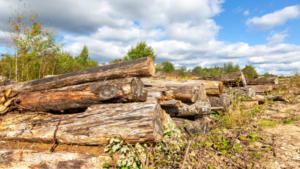
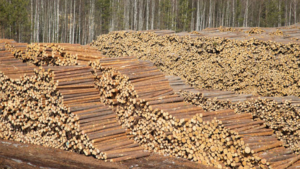

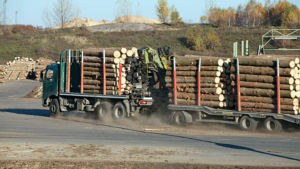

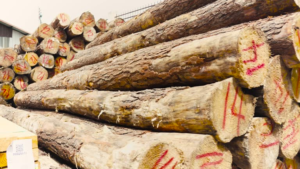
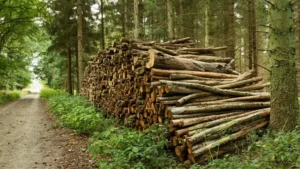


Leave your comment